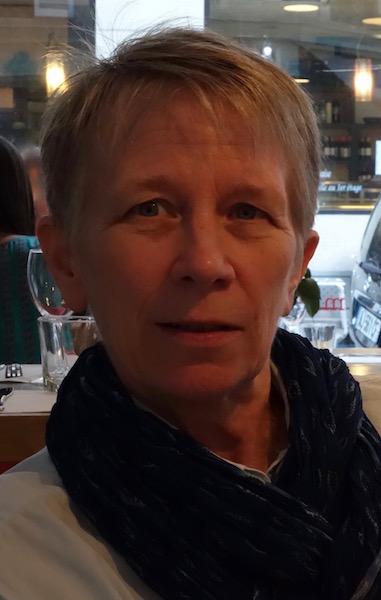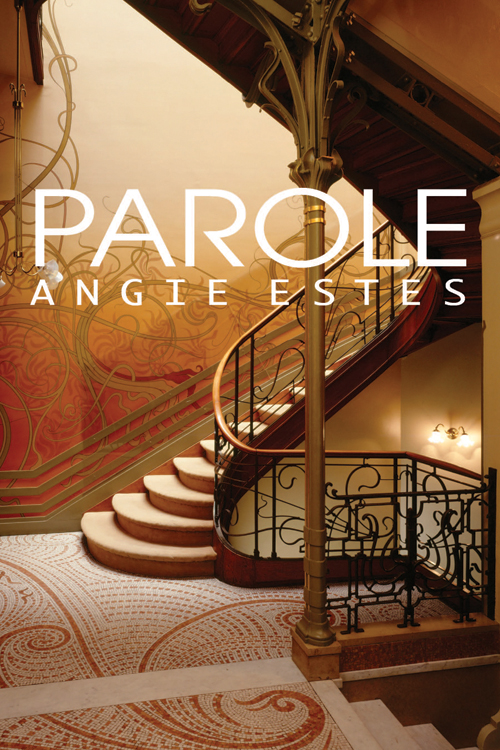Photographed over ten days in December 1995 by the Hubble Space Telescope, showing the ‘deepest-ever’ view of the universe. He telleth the number of the stars; he calleth themall by their names: tutti-frutti, Cimabue, bracelets of Cartier, chock full o’Giotto spilled onto a black sky like Jujubes during a matinee. Anna-Eva Bergmanpainted Earth Seen from the Moon and then painted the moon—Grand rond gong in vinylique and metal leaf—as if it were the mirror she used for viewing her own paintings. In the cosmos of Dante, everyone enters deathbackwards, their past still before them, just as in some funeralprocessions there walks a saddled horse without a rider, boots reversedin the stirrups. If speech, as George Eliot claims, is but broken light upon the depth of the unspoken, then all musicplayed on the terraces of the audiences of the moon streams from the violino, the most prized salami in Lombardy—made from the haunches and shoulders of goat, deer, or chamois—shaped like a musical instrument and carved as a violin would be played: the paw graspedwith the left hand, the leg held firm beneath the chin, while in the right handa knife slides like a rosined bow. Traditionally accompanied by a Valtellina Superiore, Infernoriserva, it is eaten with a bit of Bitto cheese from the Celtic bitu, eternal, which can be kept for a very long time. The telescope showed us galaxiesso far away that their light has been traveling toward us for most of the history of the universe, even though the galaxies keep moving away, just as Augustine explained: So I can be far from glad in remembering myselfto have been glad, and far from sad when I recall my pastsadness, as in the descent into descant or chant, the Latincanere: to sing. Even now I see us on the boat leaving Venice—you facing forward, me looking back. You did not move toward me yet remained in view: your facecentered, in focus, with all of Venice receding behind you.
Deep Field
Feature Date
- June 25, 2019
Series
Selected By
Share This Poem
Print This Poem
Copyright © 2018 by Angie Estes.
All rights reserved.
Reproduced by Poetry Daily with permission.

Angie Estes is the author of six books of poems, most recently Parole (Oberlin College Press, 2018). Her previous book, Enchantée (Oberlin, 2013), won the 2015 Kingsley Tufts Poetry Prize, and Tryst (Oberlin, 2009), was selected as one of two finalists for the 2010 Pulitzer Prize. Her second book, Voice-Over, won the 2001 FIELD Poetry Prize and was also awarded the 2001 Alice Fay di Castagnola Prize from the Poetry Society of America. Her first book, The Uses of Passion, was the winner of the Peregrine Smith Poetry Prize. The recipient of many awards, including a Guggenheim Fellowship, a Pushcart Prize and the Cecil Hemley Memorial Award from the Poetry Society of America, she has also received fellowships, grants, and residencies from the National Endowment for the Humanities, the National Endowment for the Arts, and the Woodrow Wilson Foundation. She was recently named a 2019-2020 fellow at the Radcliffe Institute for Advanced Study at Harvard University.

Oberlin, Ohio
Oberlin College
Whenever I see a poem by Angie Estes I prepare myself for serious delight. Her timing and her ever-uninhibited instinct for poetic shape are the triumphs of a first-rate musical intelligence. Angie Estes is Fred Astaire and Ginger too: backwards in high heels, forward on rollerskates, never have classy and sexy been better matched.
—Linda Gregerson
. . . a brilliant and intellectually dazzling investigation of the often unstable relationship between language and experience. These heart-breaking and inventive poems negotiate the oscillations of event and memory in order to reveal the delicate and highly filigreed interweaving—in our lives—of action, meditation, and utterance. Beauty and insight spill off every page.
—David St. John
Angie Estes takes very alert art and wakes it up all over again. Out of wonderful sliding sound relationships and torqued-up rhythms, out of histories as vivid as they are diverse, she creates a present moment in which we realize that Giotto and Le Corbusier are, and always have been, contemporaries—our contemporaries—for great art always happens in the present, and Estes’ work is no exception. It’s now.
—Cole Swensen
Angie Estes has recently created some of the most beautiful verbal objects on the planet.
—Stephanie Burt
This is a poetry of style, elegance, and fresh surprise, for the ear and the eye, the heart and the mind. It reminds me why I read.
—Langdon Hammer
Poetry Daily Depends on You
With your support, we make reading the best contemporary poetry a treasured daily experience. Consider a contribution today.



